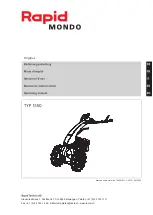
65 / 94
Maintenance and Care
4. 6. Autoclaving
Always disassemble all parts before autoclaving, e.g. lids need to be removed before
autoclaving a bucket or rotor.
If not stated otherwise on the parts themselves, all parts can be autoclaved at 121 °C
for 20 min. Only exception is the hematocrit rotor at 134 °C for 20 min. Refer to
for details on rotors.
Make sure that the necessary sterility is achieved according to your requirements.
After autoclaving, treat the entire surface of aluminum parts including the cavities with
corrosion protection oil (70009824).
CAUTION
Never exceed the permitted temperature and duration when autoclaving.
NOTICE
No chemical additives are permitted in the steam.
4. 7. Service
Thermo Fisher Scientific recommends having the centrifuge and accessories serviced once
a year by an authorized service technician. The service technician checks the following:
electrical equipment and connections
suitability of set-up site
centrifuge lid lock and safety system
rotor
fixation of rotor and drive shaft of the centrifuge
protective casing
Before service, centrifuge and rotors should be thoroughly cleaned and decontaminated to
ensure full and safe inspection can be completed.
Thermo Fisher Scientific offers inspection and service contracts for this work. Any
necessary repairs are performed for free during the warranty period and afterwards for
a charge. That is only valid if the centrifuge has only been maintained by an authorized
Thermo Fisher Scientific service technician.
A validation of the centrifuge is recommended and can be ordered from customer service.
4. 8. Lifetime
The centrifuge is specified for a lifetime of 13 years. Decommissioning the centrifuge is
suggested when this limit is reached.
The lifetime of rotors, buckets and lids is based on cycles and specified individually for each
rotor in the chapter
"Rotor Specifications" on page 26
. Other accessories are not limited
by a specific lifetime and need only be replaced when damaged or worn.















































